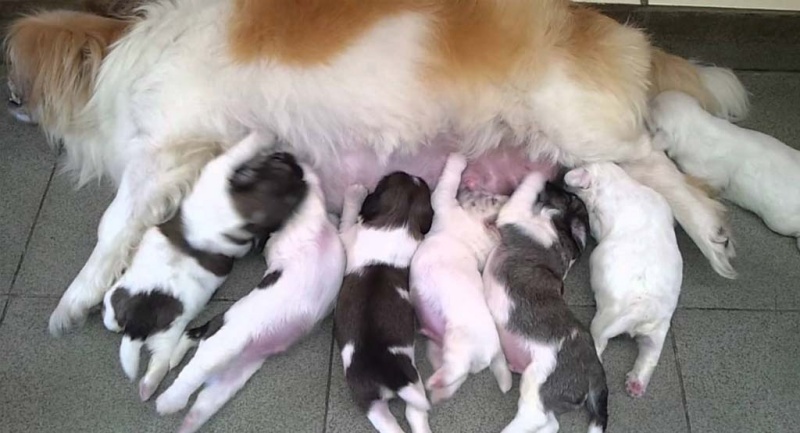
As a new puppies owner, you may have experienced the challenges of separation anxiety. It’s a real issue that many puppy owners face but often aren’t aware of how to prevent it. Separation anxiety occurs when puppies exhibit anxious behaviors when left alone or separated from their owner or handler. In this article, we will explore what separation anxiety is, why it’s a common issue for puppies, how to identify the signs, and most importantly, how to prevent and deal with it effectively.
What is Separation Anxiety in Puppies?
Separation anxiety, also known as “Isolation Distress,” is a condition in which puppies become anxious and exhibit behaviors when left alone or separated from their owners. It is characterized by a strong attachment to constant attention, including physical affection and the mere presence of the owner in the room.
The Nature of Puppies and Separation Anxiety
Puppies are naturally social animals that thrive in pack-like environments. Being alone goes against their natural instincts, which makes them more susceptible to separation anxiety. However, it’s possible to prevent separation anxiety by teaching your puppy that being left alone is safe and normal.
Identifying the Signs of Separation Anxiety in Puppies
It can be challenging to distinguish between normal puppy behaviors and separation anxiety behaviors, especially for new puppy owners. Whining is a common behavior in puppies, particularly when they are initially separated from their mother and littermates. However, if the whining persists for hours on end, escalates to a loud pitch, and is accompanied by destructive behaviors, it may indicate separation anxiety. Other signs include excessive barking, pawing, scratching, heavy panting, pacing, and distress when the owner returns after being left alone.
Understanding the Causes of Separation Anxiety in Puppies
Separation anxiety is not necessarily caused by something the owner did or didn’t do. Puppies may already have a predisposition to anxiety when they are selected from a litter or shelter. However, there are factors that inadvertently contribute to separation anxiety, such as making a big deal out of coming and going, not providing appropriate channels for their energy, and failing to establish a calm and assertive energy.
Prevention: Teaching Puppies to Be Alone

Teaching puppies how to be alone is crucial in preventing separation anxiety. A crate can play a significant role in this process. By incorporating the crate into your puppy’s daily routine, you can provide structure and security while gradually acclimating them to being alone. Designate specific times for your puppy to relax in their crate in a separate room, allowing them to become comfortable with their own company. Make the crate a comfortable and inviting space, covering it with a light blanket to create a calming environment. Using white noise can further help to block out distractions.
Crate Training for Separation Anxiety
While not all puppies take to their crate immediately, crate training can be an effective tool in combating separation anxiety. Encourage your puppy to go into their crate by making it a positive experience. Use treats and toys to create a fun game and avoid associating the crate with the end of playtime. Gradually introduce bedding and other comforts, but be mindful of any potential hazards. Consistency and practice are essential in helping your puppy build confidence and feel secure while being alone.
Dealing with Anxious Behaviors in the Crate
Some puppies may exhibit anxious behaviors when confined to their crate. The key is to approach them calmly and assertively, rather than becoming frustrated or correcting them in a harsh manner. A quick tap on the crate, a gentle “No,” and calmly walking away can help convey the message that being in the crate is not a big deal. It’s important to allow your puppy to work out their anxiety and settle on their own. Avoid immediately rewarding their fussing by letting them out of the crate. Instead, wait for a moment of calmness before addressing their behavior.
Balancing Time in and out of the Crate
When your puppy is out of the crate, it’s essential to create a balanced routine. Avoid a cycle of constant play followed by confinement, as this can lead to overstimulation and an inability to settle in the crate. Before returning your puppy to the crate, give them a few minutes to calm down and relax. Structured activities, such as obedience training or short walks, can help channel their energy and build confidence. Consistency is key in teaching your puppy to be comfortable and confident when left alone.
Common Mistakes that Promote Separation Anxiety

New puppy owners often make mistakes that inadvertently promote separation anxiety. One common error is making a big fuss when leaving or returning home. This can create excitement and heightened anticipation, leading to anxious behaviors. Instead, maintain a low-key and matter-of-fact approach to coming and going. Another mistake is rewarding excited behaviors, such as jumping or pacing, when your puppy is in their playpen or about to go outside. By waiting for a moment of calmness, you can reinforce the importance of calm behavior.
Providing Appropriate Channels for Energy
One critical aspect of preventing separation anxiety is ensuring that your puppy has appropriate outlets for their energy. Instead of immediately giving them attention, encourage them to engage in activities that tap into their natural instincts and drives. For example, working on obedience commands or providing mental stimulation through puzzle toys can help channel their energy in a positive way. By incorporating these small tweaks into your interactions, you can help prevent excitable energy from turning into anxiety.
Conclusion
Separation anxiety is a common issue faced by many puppy owners, but with the right techniques, it can be prevented and managed effectively. By understanding the nature of puppies, identifying the signs of separation anxiety, teaching them to be alone, and avoiding common mistakes, you can help your puppy build resilience and overcome their anxiety. Remember, consistency and patience are key in the journey to creating a confident and independent puppy.
For more puppy training tips and advice, don’t forget to visit our blog and join our “Ask A Puppy Trainer!” live show on Instagram every Wednesday at 1 pm PT. Together, we can navigate the challenges of separation anxiety and create a happy and well-adjusted puppy.
Related Articles
- Puppyhood Made Easy for New Owners: Create a Puppy Potty Schedule!
- A Puppy Parent’s Guide to Microchipping!
- Puppyhood Made Easy for New Owners: Setting Up Your Home for a New Puppy!
